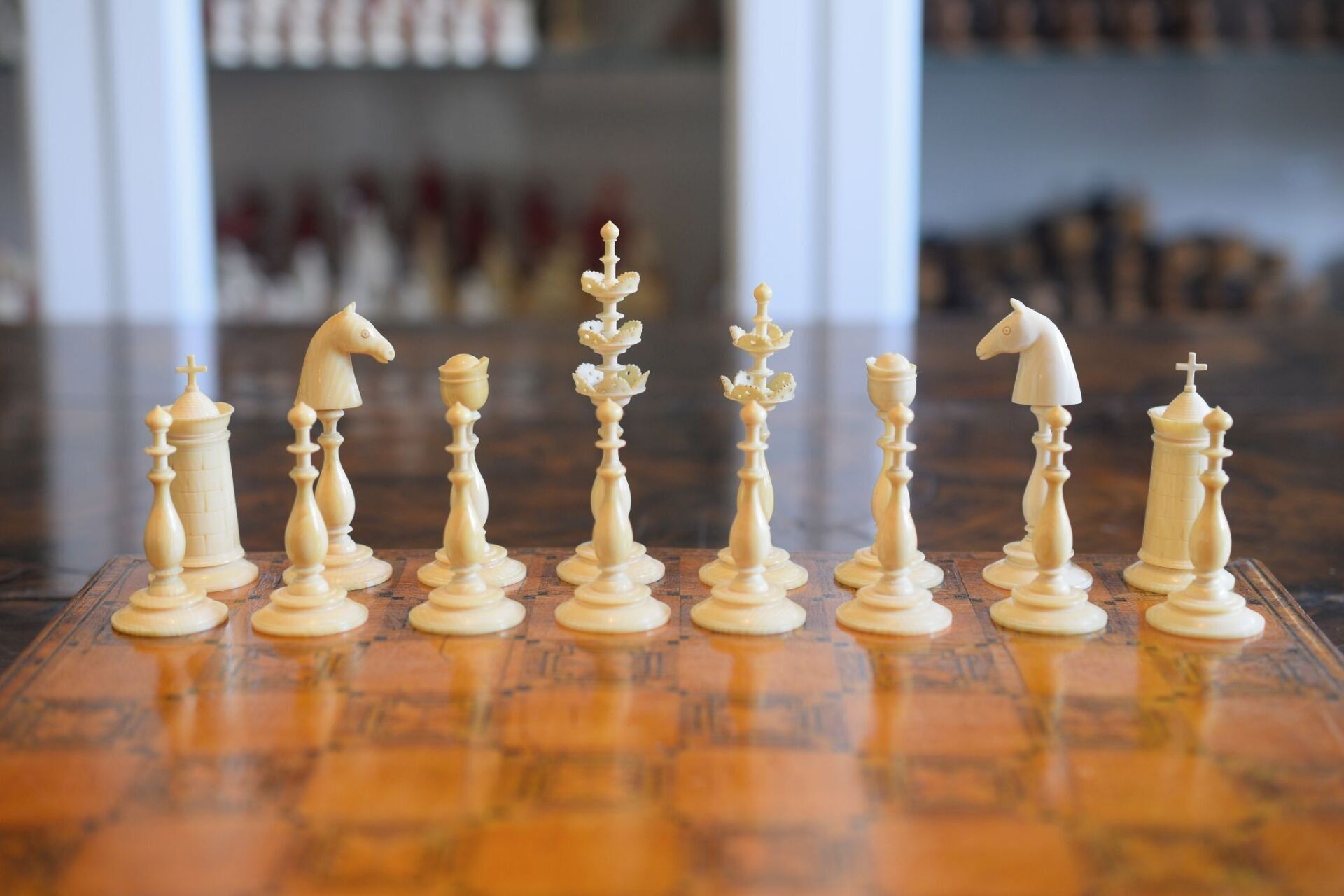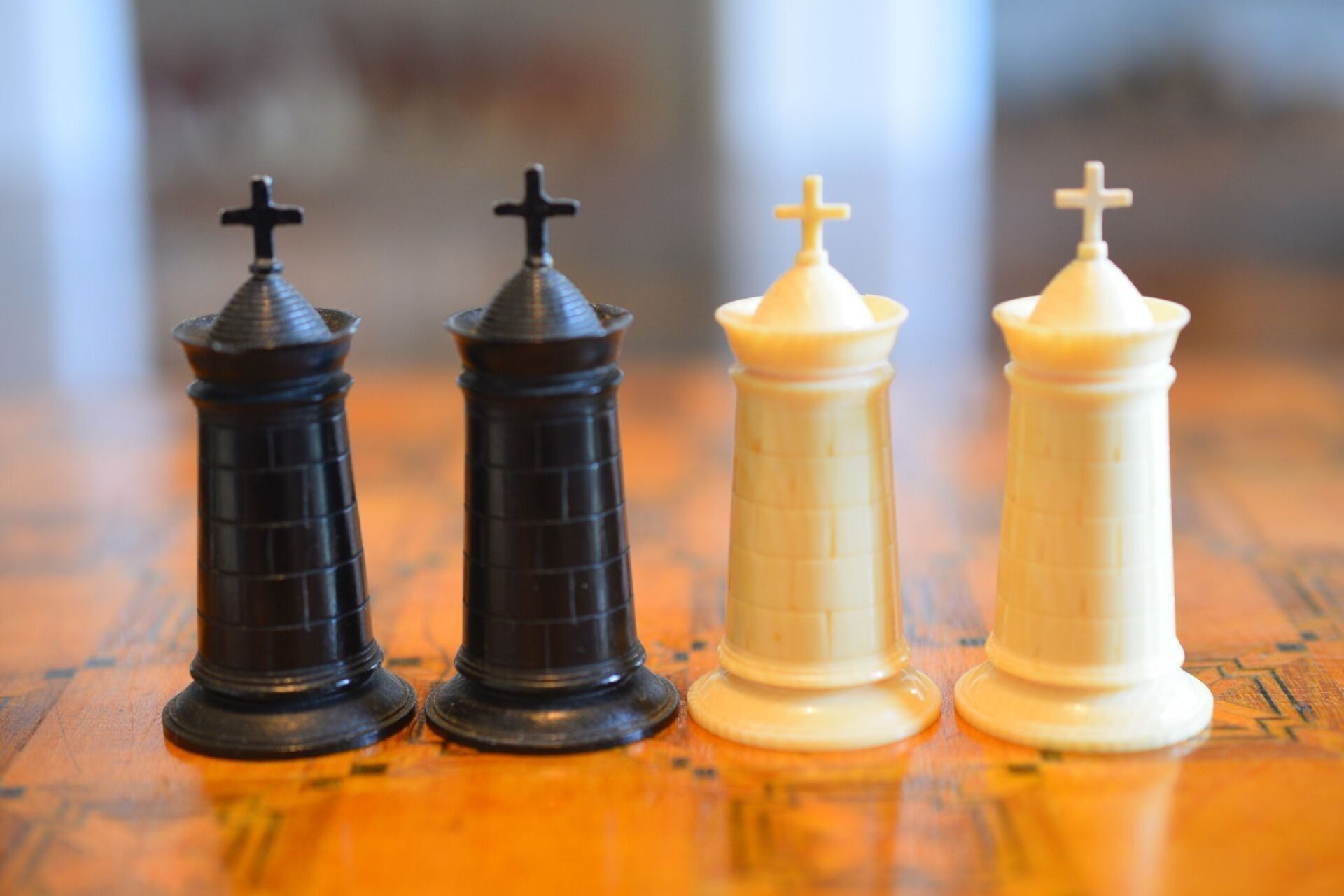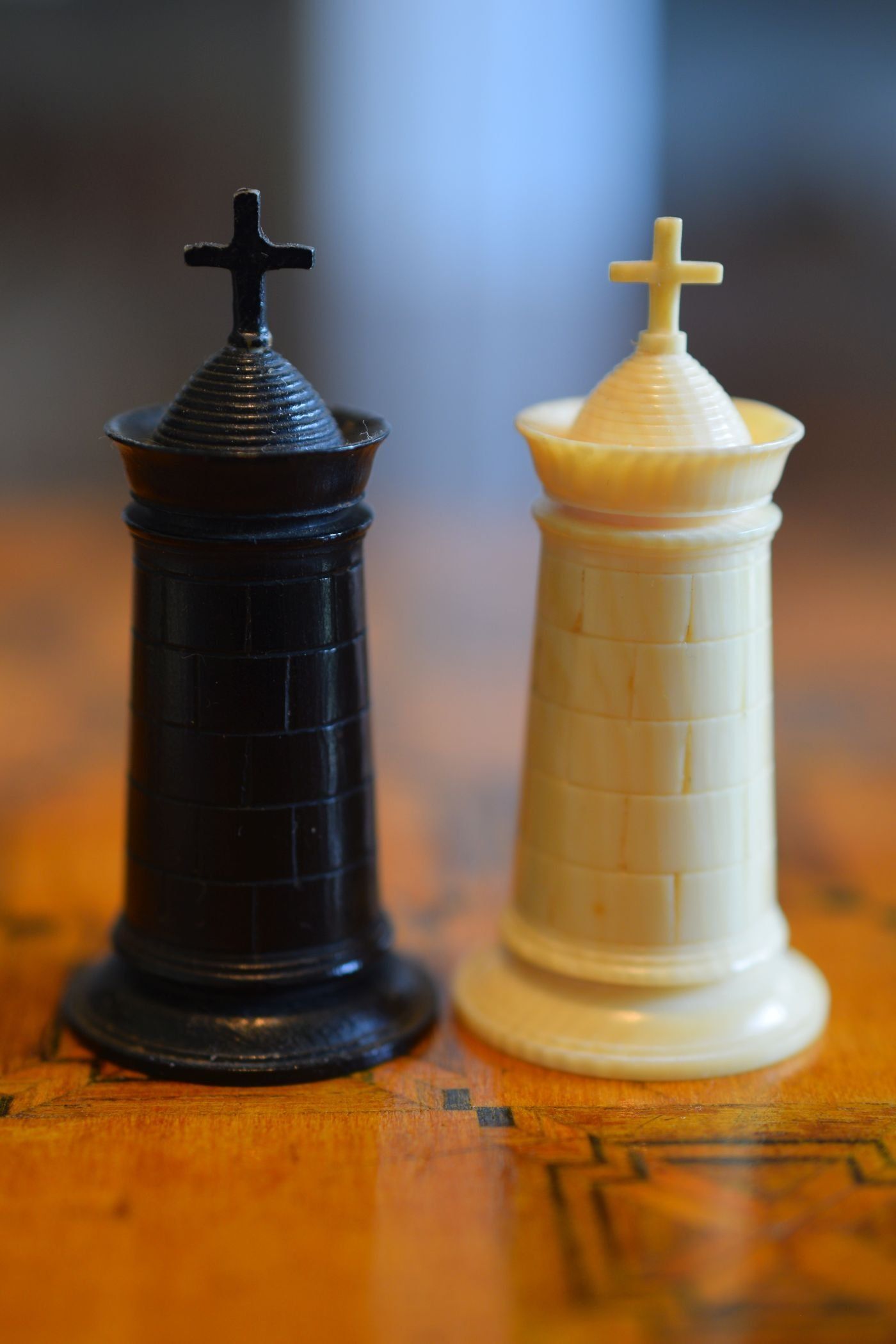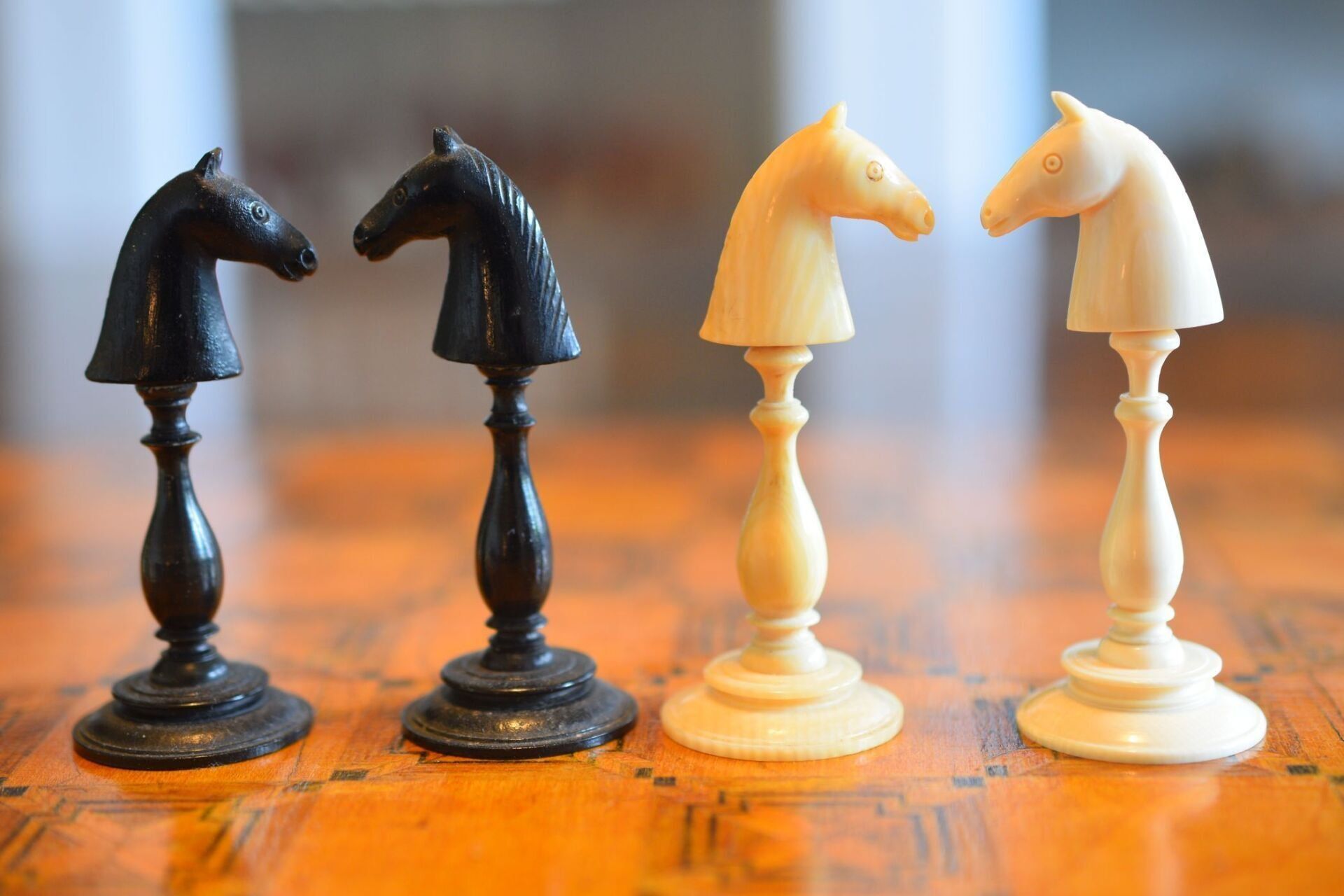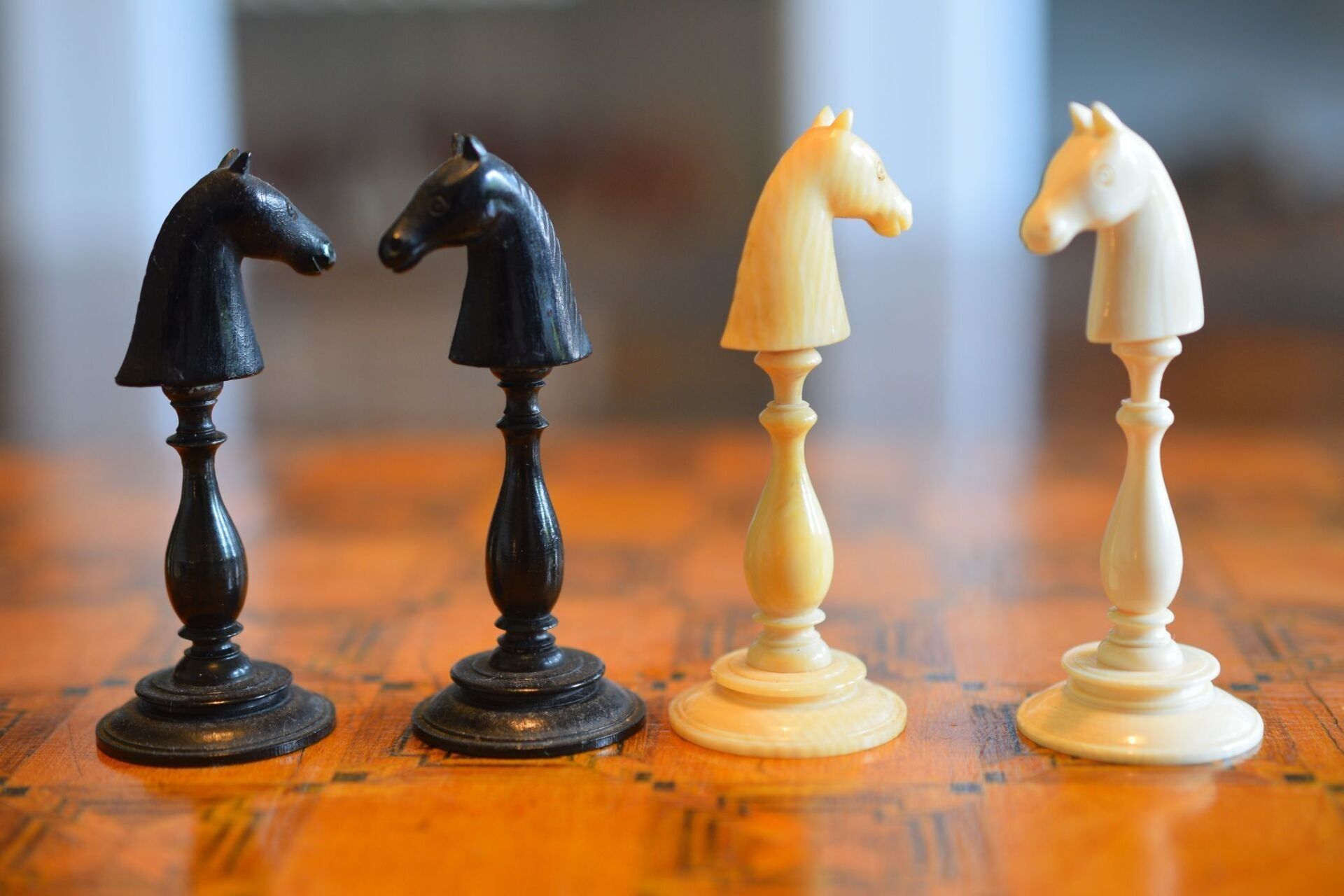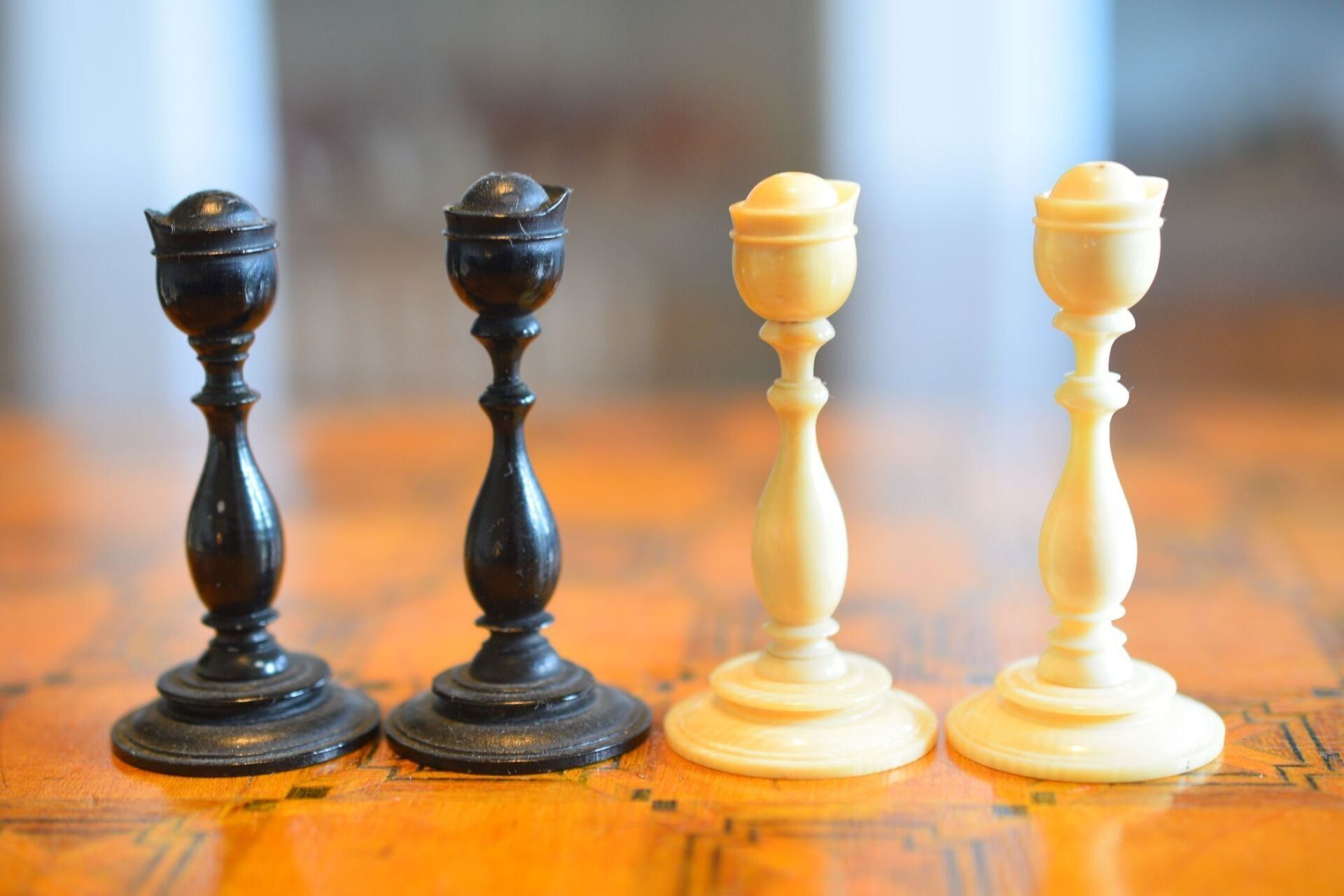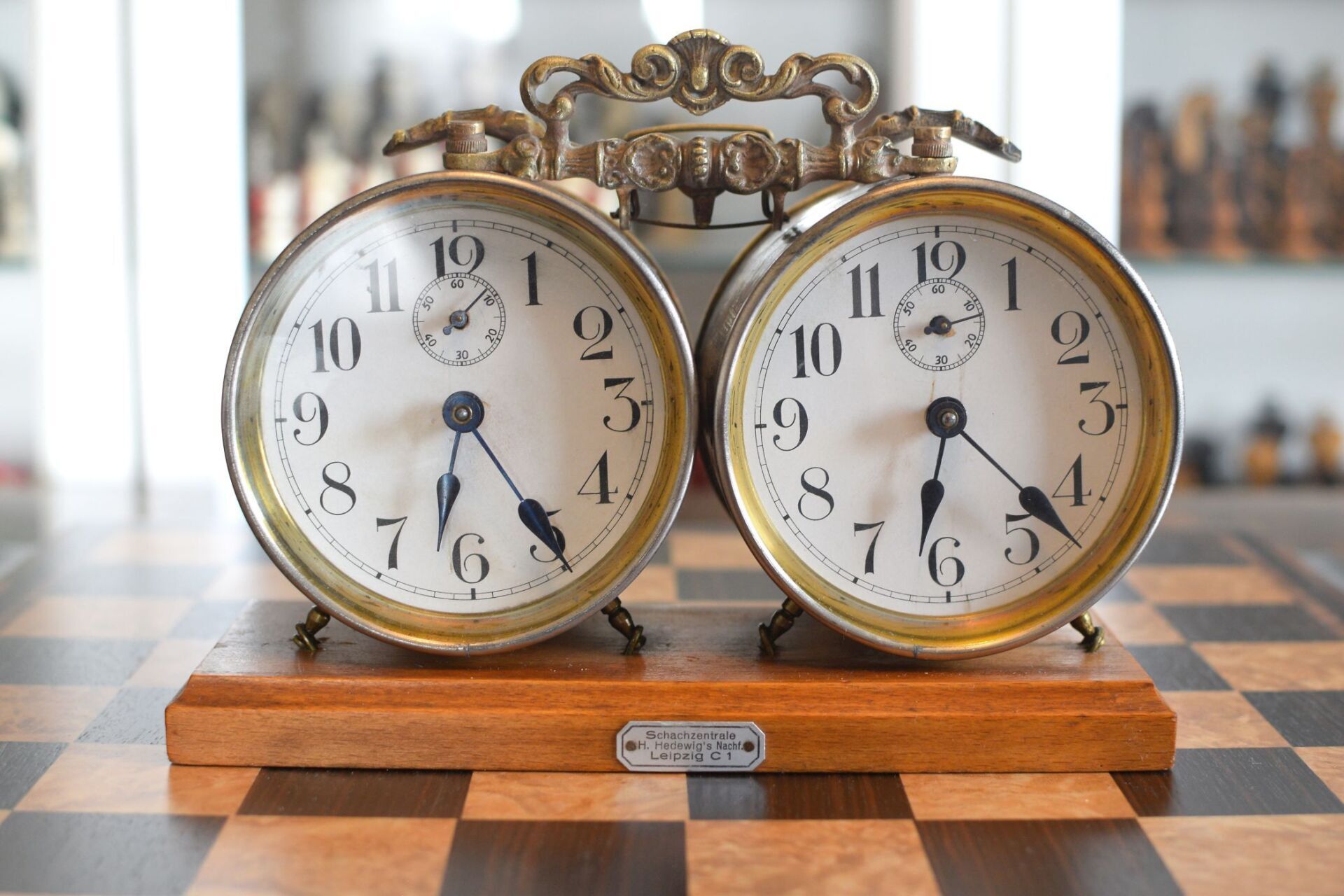Danish Ivory Chess Set by I.G. Schwartz & Søn, ca. 1820
Danish turned ivory chess set, one side natural, the other side stained black. The pieces are a Danish variation of the "Selenus" pattern. The kings with triple galleries on a baluster shaped stem and with drop finial. Queens of similar shape, but with double galleries. Bishops with a brimmed cap. The knights as horses' heads. Rooks as massive turrets with a very unusual cross finial. Pawns with elongated baluster bodies and a drop finial. The king size is 84 mm / 3.3".
On page 118 of his book "Chessmen for Collectors" (picture 141), Victor Keats is showing a set from the Harbeson and Hafler Collection, which is of slightly different, but still comparable design. In particular the design of the knights is almost identical. While Keats attributes the set to France, these sets are of Danish origin. This particular set was made by I.G. Schwartz & Søn, a company based in Copenhagen. The company was founded by Johan Adam Schwartz, who was of German origin and who travelled to Copenhagen to train as an art turner ("kunstdrejer"). He became a partner in his master's business in 1801 and continued the business alone following the death of his master in 1804. His nephews Johan Georg Schwartz and Carl August Schwartz followed his example and moved to Copenhagen to learn the craft of art turnery in their uncle's business. The latter's apprenticeship work, which he made around 1815, was a chess set identical to this one shown here. It is therefore rather safe to assume that the set shown here was made around 1820.


